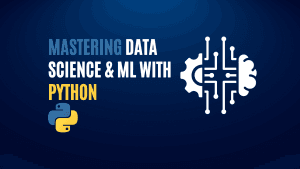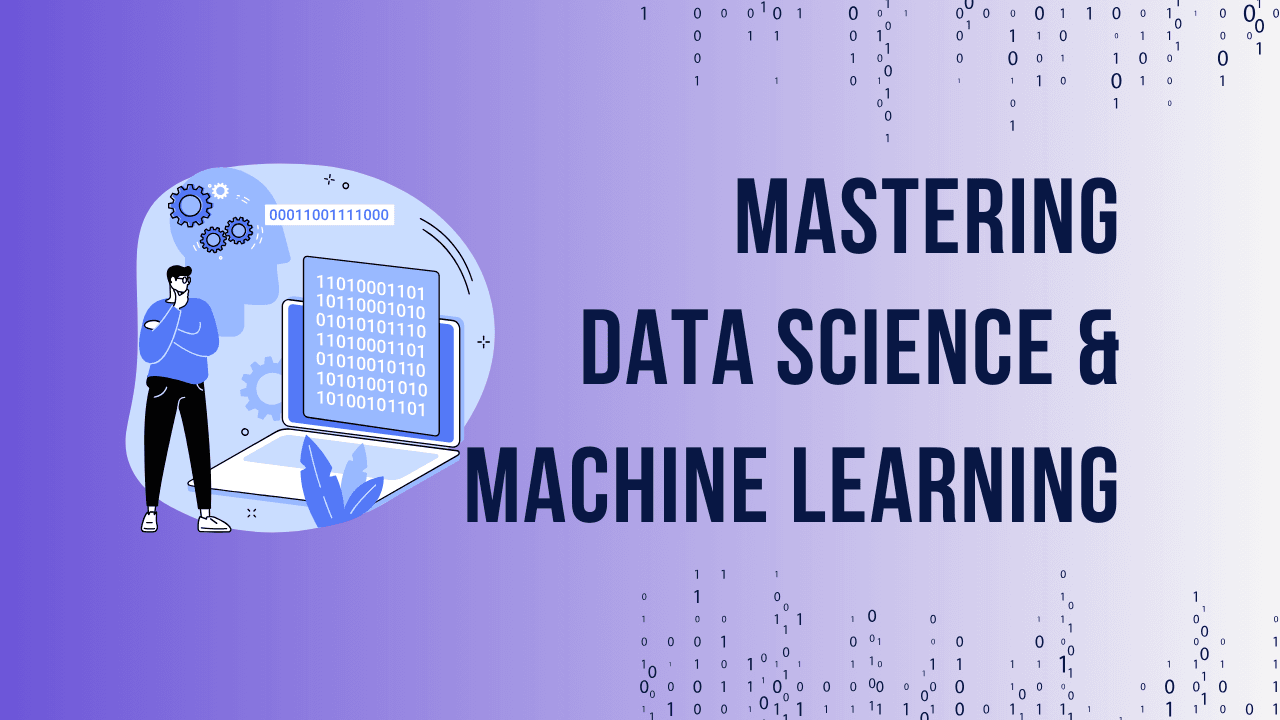Table of Contents
Toggle1. Introduction to Data Science Interviews
Data science has taken the world by storm in the last decade, and 2024 is no exception. The demand for skilled data scientists is increasing as companies leverage data-driven insights to guide business strategies. For college passout students entering this competitive field, preparing for data science interviews is key to securing a placement or job.
Importance of Data Science in 2024
In 2024, data science continues to be one of the most sought-after career paths. Organizations across industries are looking for professionals who can analyze vast amounts of data, uncover trends, and provide actionable insights. This surge in demand has led to competitive interview processes that test a candidate’s ability to solve complex problems, work with data, and apply advanced analytical techniques
How Data Science Interviews Have Evolved
Data science interviews have evolved significantly over the years. While earlier interviews focused mainly on theoretical knowledge, today’s interviews emphasize practical application, including hands-on coding challenges, problem-solving scenarios, and case studies. Recruiters look for candidates who not only understand data science concepts but can apply them to real-world situations.
Preparing for Your First Data Science Interview
Preparing for your first data science interview can be daunting, but with the right approach, you can excel. Start by reviewing the fundamental concepts, practicing coding problems, and brushing up on machine learning algorithms. Familiarize yourself with popular data science tools and libraries, such as Python, SQL, and data visualization tools like Matplotlib.
Ready to take you Data Science and Machine Learning skills to the next level? Check out our comprehensive Mastering Data Science and ML with Python course.
2. Core Data Science Concepts
Data science has taken the world by storm in the last decade, and 2024 is no exception. The demand for skilled data scientists is increasing as companies leverage data-driven insights to guide business strategies. For college passout students entering this competitive field, preparing for data science interviews is key to securing a placement or job.
Overview of Statistics and Probability
Statistics and probability form the backbone of data science. Expect questions around probability distributions, hypothesis testing, p-values, and statistical significance. Interviewers may also test your knowledge of descriptive statistics, such as mean, median, mode, variance, and standard deviation.
Key Data Science Algorithms Explained
Data science relies heavily on algorithms to extract meaningful insights from data. Some of the commonly asked algorithms include:
- Linear Regression: Used for predicting continuous values.
- Logistic Regression: Ideal for binary classification problems.
- Decision Trees: A tree-based algorithm for classification and regression.
- K-Means Clustering: A popular unsupervised learning algorithm for grouping data.
Data Manipulation and Cleaning Techniques
A significant portion of data science involves data cleaning and manipulation. You’ll likely encounter questions on how to handle missing data, normalize datasets, and clean data to ensure accuracy. Interviewers may ask you to perform tasks using Python libraries like Pandas to demonstrate your skills in data preprocessing.
Ready to take you Data Science and Machine Learning skills to the next level? Check out our comprehensive Mastering Data Science and ML with Python course.
3. Python Programming in Data Science Interviews
Python is the go-to programming language for data science. Whether you’re dealing with data manipulation, machine learning, or visualization, Python is essential. Most interviews will feature coding challenges in Python.
Python Basics Every Candidate Must Know
Python basics, such as loops, conditionals, and functions, are often tested in interviews. You should be comfortable writing clean and efficient code to solve algorithmic problems. Interviewers may also ask about Python’s unique features, like list comprehensions and lambda functions.
Common Python Challenges in Interviews
Python coding challenges are a staple in data science interviews. You may be asked to:
- Manipulate arrays or lists.
- Work with dictionaries and sets.
- Perform operations on data frames using Pandas. Make sure you practice these problems to avoid surprises during your interview.
Python Libraries for Data Science (Pandas, NumPy, Scikit-Learn)
A deep understanding of Python libraries like Pandas (for data manipulation), NumPy (for numerical computations), and Scikit-learn (for machine learning) is necessary. You may be asked to:
- Merge datasets with Pandas.
- Perform linear algebra operations using NumPy.
- Implement machine learning algorithms using Scikit-learn.
Ready to take you Data Science and Machine Learning skills to the next level? Check out our comprehensive Mastering Data Science and ML with Python course.
4. Machine Learning Fundamentals
Machine learning is a cornerstone of data science, and interviewers will often dive deep into your understanding of machine learning concepts. You should be prepared to explain algorithms, concepts, and applications.
What is Machine Learning?
At its core, machine learning is a subset of artificial intelligence that enables systems to learn from data and improve over time without being explicitly programmed. Interviewers may ask you to define machine learning and describe its importance in predictive modeling and data analytics.
Types of Machine Learning Algorithms
Machine learning algorithms are generally categorized into three types:
- Supervised Learning: Algorithms that learn from labeled data. Examples include Linear Regression, Decision Trees, and Support Vector Machines.
- Unsupervised Learning: Algorithms that find patterns in data without labels, such as K-Means Clustering and Principal Component Analysis.
- Reinforcement Learning: Algorithms that learn through trial and error, with the goal of maximizing a reward function.
How to Explain ML Models in an Interview
Explaining machine learning models clearly is critical. Interviewers might ask questions like, “How does the decision tree algorithm work?” or “Explain how you would choose between a linear regression and a logistic regression model.” Being able to justify your model selection based on problem context and data type is key.
Ready to take you Data Science and Machine Learning skills to the next level? Check out our comprehensive Mastering Data Science and ML with Python course.
5. Top Famous Data Science Algorithms
Knowing the most famous data science algorithms is essential for acing interviews. These algorithms are widely used in both academic and professional settings.
Linear Regression, Logistic Regression
- Linear Regression: This algorithm is used to model the relationship between a dependent variable and one or more independent variables. Expect questions about its assumptions (e.g., linearity, homoscedasticity) and metrics like R-squared and mean squared error.
- Logistic Regression: Used for binary classification, logistic regression is a popular algorithm for tasks such as predicting customer churn. Interviewers might ask about its sigmoid function and how to interpret the output probabilities.
Decision Trees, Random Forests, Gradient Boosting
- Decision Trees: These algorithms are intuitive and easy to visualize, making them a common topic in interviews. You may be asked about tree pruning, overfitting, and decision rules.
- Random Forests: This ensemble method improves decision trees by creating multiple trees and averaging their predictions. Be prepared to explain how random forests reduce overfitting and their advantages in predictive accuracy.
- Gradient Boosting: This algorithm builds trees sequentially, each one correcting the errors of the previous one. Interviewers might ask you to explain how gradient boosting minimizes loss and how it differs from random forests.
Clustering Techniques (K-Means, DBSCAN)
- K-Means Clustering: This is a popular unsupervised learning algorithm used for grouping similar data points. Expect questions on how the algorithm works, the elbow method for selecting the number of clusters, and its limitations with non-spherical data.
- DBSCAN (Density-Based Spatial Clustering of Applications with Noise): A more advanced clustering technique, DBSCAN is effective at identifying clusters of arbitrary shapes. Be ready to explain concepts like core points, density reachability, and handling noisy data.
Ready to take you Data Science and Machine Learning skills to the next level? Check out our comprehensive Mastering Data Science and ML with Python course.
6. Data Preprocessing in Data Science Interviews
Data preprocessing is a crucial step in data science, and interviewers often test your knowledge on this topic.
Handling Missing Data
Handling missing data is a common challenge in real-world datasets. You may be asked how you would deal with missing values. Typical approaches include:
- Imputation: Filling missing values using mean, median, or mode.
- Dropping Missing Values: Removing rows or columns with too many missing values.
- Advanced Methods: Using algorithms like k-nearest neighbors to impute missing data based on similarity.
Feature Scaling and Transformation
Feature scaling ensures that variables are on the same scale, improving the performance of algorithms like gradient descent. You may need to explain different techniques, such as:
- Min-Max Scaling: Rescaling features to a range between 0 and 1.
- Standardization: Converting data to a distribution with a mean of 0 and a standard deviation of 1.
Data Splitting (Train-Test, Cross Validation)
Before feeding data into a machine learning model, it must be split into training and testing sets. Interviewers might ask how you would approach data splitting and the importance of cross-validation for evaluating model performance.
Our Students Testimonials:
7. Interview Questions on Data Visualization
Data visualization plays a pivotal role in conveying insights to stakeholders, making it a frequent topic in interviews.
Importance of Data Visualization in Analytics
Data visualization allows data scientists to present findings in a way that is easy to understand. Visuals such as graphs and charts help communicate key insights, trends, and patterns that might otherwise go unnoticed. Expect interviewers to ask about how you’ve used data visualization in past projects.
Common Tools (Matplotlib, Seaborn, Power BI)
You may be asked about your experience with popular data visualization tools:
- Matplotlib: A versatile library for creating static, interactive, and animated plots in Python.
- Seaborn: Built on top of Matplotlib, Seaborn makes it easier to create visually appealing statistical graphics.
- Power BI: A business analytics service by Microsoft, Power BI allows users to create interactive dashboards and reports.
Visualizing Key Insights from Data
Being able to create meaningful visualizations is key. You might be asked to explain how you would visualize a certain dataset or present a complex analysis to a non-technical audience. Typical visualizations include:
- Histograms: To show the distribution of data.
- Box Plots: For detecting outliers.
- Heatmaps: For visualizing correlation matrices.
Our Students Testimonials:
8. SQL for Data Science
SQL (Structured Query Language) is indispensable for data science interviews, especially when working with large datasets stored in relational databases.
SQL Basics for Data Science Interviews
You’ll likely encounter SQL-based questions that test your ability to retrieve and manipulate data. Make sure you’re familiar with:
- SELECT Queries: To extract data from tables.
- JOINs: Combining data from multiple tables.
- GROUP BY and HAVING Clauses: For aggregation and filtering of grouped data.
Common SQL Interview Questions
Prepare for questions like:
- “How would you retrieve the top 10 highest sales from a table?”
- “Explain the difference between INNER JOIN and OUTER JOIN.”
- “How do you handle NULL values in SQL?”
Data Retrieval and Manipulation Techniques
Be ready to write SQL queries to solve problems involving data retrieval, aggregation, and transformation. Interviewers might ask you to perform tasks like:
- Filtering data with WHERE clauses.
- Sorting data using ORDER BY.
- Summarizing data with aggregate functions like COUNT, SUM, and AVG.
Ready to take you Data Science and Machine Learning skills to the next level? Check out our comprehensive Mastering Data Science and ML with Python course.
Frequently Asked Data Science Interview Questions
Here are some of the most frequently asked questions in data science interviews:
1. What is the difference between supervised and unsupervised learning?
Supervised learning involves labeled data, while unsupervised learning works with unlabeled data to find patterns and structures.
2. Explain the concept of overfitting and how to prevent it.
Overfitting occurs when a model is too complex and captures noise in the data. To prevent it, you can use techniques like cross-validation, regularization, or pruning.
3. What are the steps in a data science project?
The typical steps are: problem definition, data collection, data cleaning, exploratory data analysis, model building, model evaluation, and deployment.
4. How would you explain a complex data science concept to a non-technical audience?
Simplify the concept using analogies or visualizations. Focus on the business impact rather than the technical details.
5. What is a confusion matrix, and how is it used?
A confusion matrix is a table used to evaluate the performance of a classification model. It shows true positives, false positives, true negatives, and false negatives.
6. How do you handle class imbalance in a dataset?
You can handle class imbalance using techniques like resampling (oversampling the minority class or undersampling the majority class) or using algorithms like SMOTE (Synthetic Minority Over-sampling Technique).



